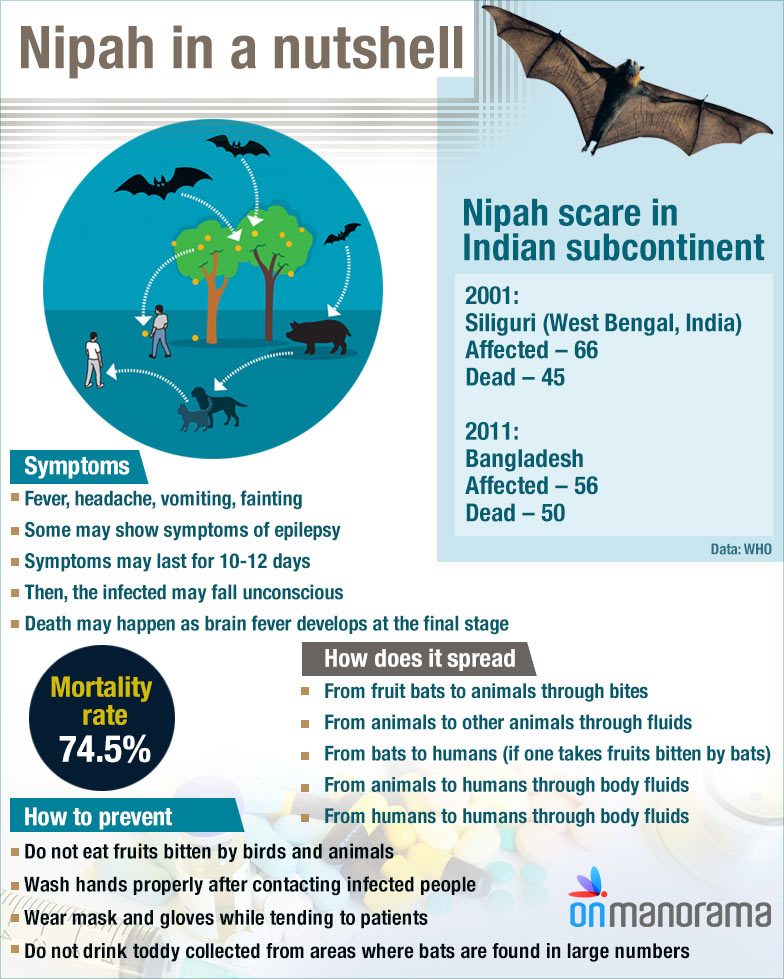How a Malaysian doc discovered Nipah virus

Mail This Article
Back in 1999, Dr Kaw Bing Chua was working at the Department of Medical Microbiology, University of Malaya. It was a strange period. Pig farmers were swarming hospitals in Malaysia with severe respiratory problems and high fever. At the same time, pigs in these farms were also dying as if struck by a curse.
The pig deaths were put down to swine fever. The human condition was diagnosed as Japanese enephalitis, just the way it happened in the initial phase of the Nipah outbreak in Kerala last year. By attributing the weird happenings to known causes, the viral experts in Malaysia were perhaps attempting to keep the world normal. Dr Chua, who was then a junior researcher, was not convinced. (Dr Chua, a paediatrician, is now senior principal investigator at Temasek Lifesciences Laboratory, Singapore.)
He felt there was something more to what was happening around the booming pig farm towns in Malaysia.
He learned that some of the infected pig farmers who were given two or three shots of 'mouse brain'-derived encephalitis vaccines, and asked to go back to their routine work without fear, had died swiftly, responding not a whit to the 'mouse brain' vaccines. Dr Chua told his head about this and he was given a lazy explanation. "The vaccine was not effective."
Mosquito hoax
His department was somehow convinced that the strange new disease was nothing but Japanese encephalitis. It was concluded that the new virus that was confounding Malaysia at the fag end of the 20th century was an “arbovirus”, carried by an army of arthopods like mosquitoes.
This blind conviction led to the launch of massive fumigation measures across Malaysia. Mosquitoes were mass-smothered. But no one, except Dr Chua, seemed to notice that the cases of the new kind of fever were not falling but only increasing.
All tests done in the laboratory of the Department of Medical Microbiology were to measure just one thing: the presence of Japanese encephalitis-specific immunoglobins. The department eventually gave a report to the government saying that 40 per cent of the cases were confirmed Japanese encephalitis cases. As per the protocol existing then, this was as good as 100 per cent.
Dr Chua's secret mission
On February 27, 1999, a pig farmer was admitted to University Malaya Medical Centre with what was then diagnosed as acute encephalitis. Dr Chua felt that it was time to put to test his theory that the outbreak was due to an unusual or novel agent.
There was no time to waste either. Almost all families struck by Nipah had already lost someone. Alarmingly, the virus had already spread to several states and there were reports that the scourge, whatever it was, had crossed the border into Singapore. Dr Chua desperately wanted the virus to be isolated so that he could sequence the complete virus genome.
He secretly injected the cerebrospinal fluid of the patient in a culture plate filled with a specific disease cells. Within days he secured more samples of the virus, which too he collected in culture dishes. In about a few days, he witnessed a cytopathic effect (structural changes in host cells that are caused by viral invasion) in these dishes that suggested respiratory complications.
He took this finding to his head immediately. “He took a look at the culture under the inverted microscope, turned to me and told me it was mostly some form of contamination. He told me to ignore it and discard it,” Dr Chua states in a paper published in Neurology Asia. But by then Dr Chua was certain that he was face-to-face with something that was "new and deadly".
Sighting of green lanterns
His colleagues generally dismissed him but Professor C T Tan, who was the physician in charge of the encephalitis patients in Dr Chua's Medical Centre, agreed with his findings.
In about a week, the infected cells in the culture flask that Dr Chua had 'poisoned' with the new and deadly virus had shown complete cell death. He carefully harvested the infected cells and transferred them into teflon-coated slides to be used as antigens for identification.
Dr Chua then used the slides to rule out the new virus's links to known viral diseases like herpes simplex, measles, mumps and parainfluenza.
He then reasoned that if the patients were infected with the virus that he had isolated, they should have antibodies against the virus. (Antigens are structures specifically bound by antibodies).
Using another slide, he carried out the detection of human antibodies against the isolated virus from patients. Here is how Dr Chua describes his finding in his paper. "When I looked at the finding, I could feel a chill going down my spine. All the patients’ sera and cerebrospinal fluid included in the test had strong positive antibodies against the infected cells. The infected cells lighted up as bags of green fluorescence lanterns.”
America and final shootout
Eventually, his senior conceded that there was the possibility of a new virus besides Japanese encephalitis. Dr Chua himself was sent to the United State of America to cross-check his findings with the Center for Disease Control and Prevention (CDC), Fort Collins.
He put his slide under the old electron microscope of the CDC, the first time he was watching the section through an electron microscope. He could recognise the concrete ring-like structures spread across the section. Inside him, he screamed. "My God! it was truly a paramyxovirus, not an arbovirus." All paramyxoviruses known to him spread by close contact and droplet. “No wonder all the Japanese encephalitis control measures intensively carried out by the ministry of health failed," he said.
Once this was confirmed, the Malaysian government acted with brutal efficiency. The Malaysian army rounded over one million pigs, pushed them into pits, and shot them dead.




